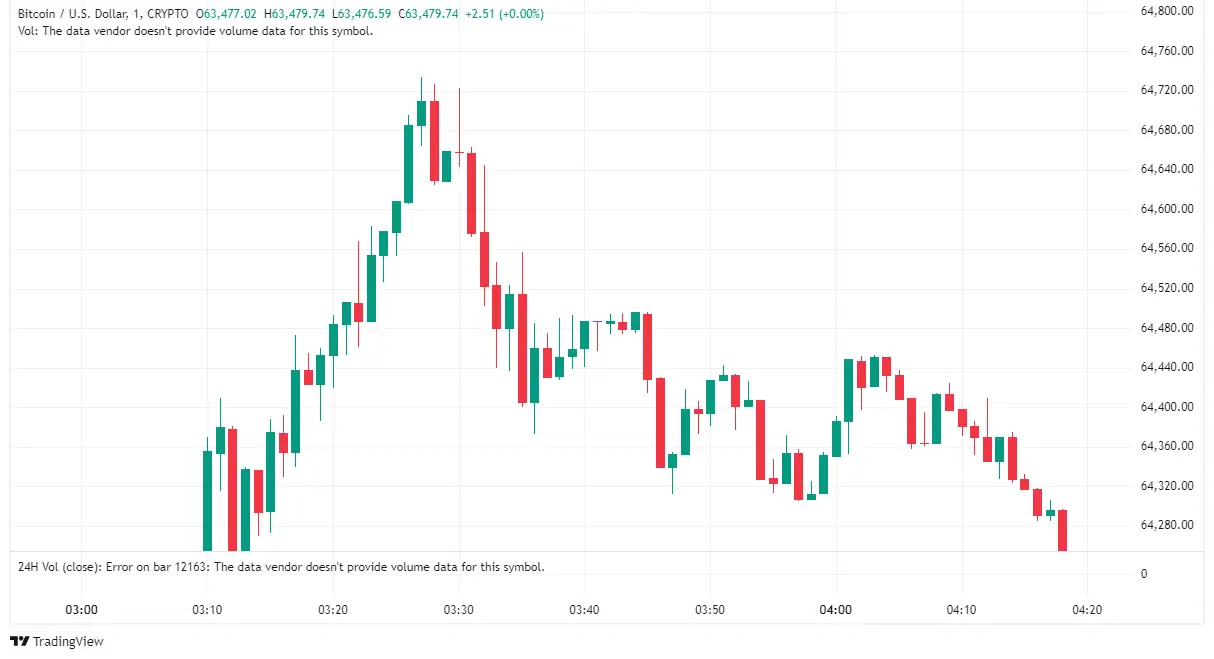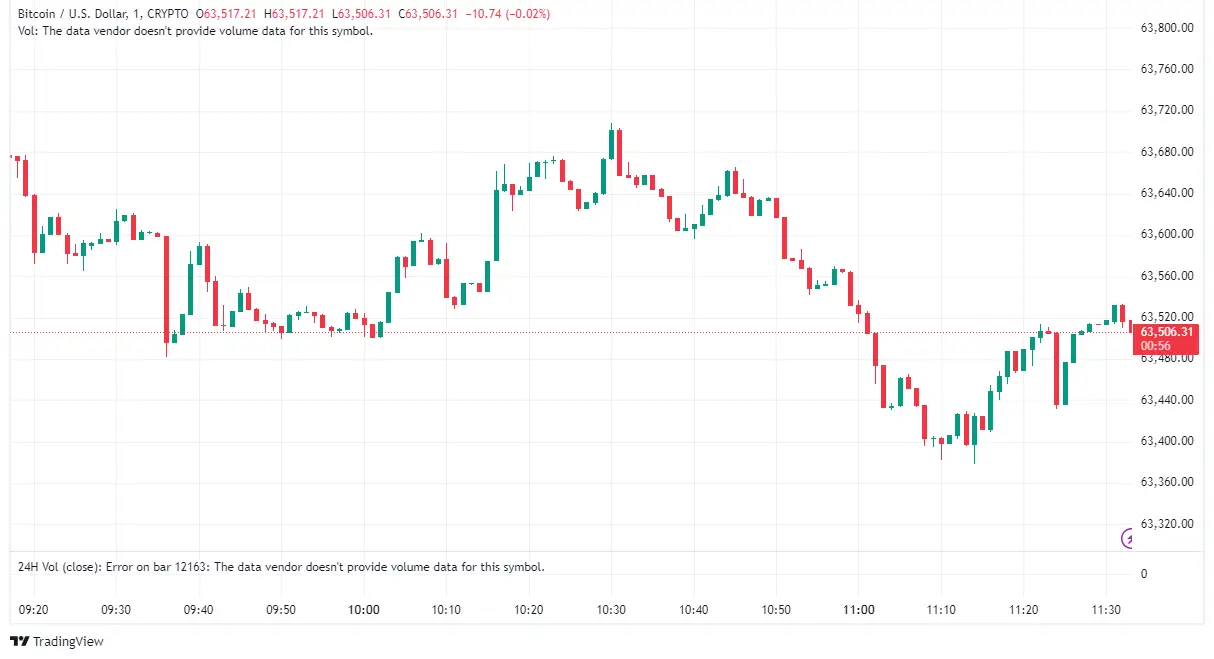Bitcoin (BTC) has jumped past $65,000, marking one of its strongest moves this year. For those new to it, Bitcoin is a digital currency built on a public network that allows people to send and store value without banks.
This rise matters because it shows how global events still shape the crypto market. BTCRepublic looks at what’s driving the climb, China’s new economic push, what it could mean for prices next, and how it may affect Bitcoin holders worldwide.
If you’re new to crypto, you’ll first need a secure wallet before trading. Here’s a full guide on how to get a Bitcoin wallet (beginner’s guide 2025).
Key Takeaways
| Insight | Summary |
| Bitcoin hits $65K after China’s move | The price jump came soon after China announced a $205B economic stimulus to boost growth. |
| Liquidity supports crypto demand | When countries add money to their economies, some of that cash flows into risk assets like Bitcoin. |
| Investors see Bitcoin as protection | Many holders treat Bitcoin as a safe store of value during times of inflation or currency pressure. |
| On-chain activity rising | Wallet inflows and trading volume show more users are active, signaling strong market interest. |
| Short-term caution still needed | A correction could follow if stimulus effects fade or global tensions increase avoid rushing in. |
| Watch key levels ahead | Staying above $65K with solid daily volume could point to another push toward the $69K zone. |
| BTCRepublic’s takeaway | Policy changes and liquidity often drive crypto moves staying informed helps you react smarter, not faster. |
Facts & Original Research
This section adds depth and credibility to the article by including data, expert commentary, and real-world market signals that help readers understand why Bitcoin’s price reacted to China’s economic policies and why these insights matter for investors.
Key Data Highlights
| Metric | Before Stimulus (Sept 2024) | After Stimulus (Oct 2024) | Impact |
| Bitcoin Price (BTC/USD) | $58,200 | $65,000+ | +11.7% in less than 48 hours |
| 24h Trading Volume (Global) | $28.4B | $42.6B | +50% surge in activity |
| Exchange Net Flows (Whale Wallets) | 15,300 BTC | −10,200 BTC (net outflow) | More holders moving BTC off exchanges |
| China 10-Year Bond Yield | 2.25% | 2.05% | Signs of monetary easing |
| Global Crypto Market Cap | $2.25T | $2.43T | $180B capital inflow to crypto markets |
Bitcoin’s Surge – What’s Going On?
Over the past 48 hours, Bitcoin (BTC) jumped from around $62,400 to above $65,000, marking a sharp rebound in market confidence. The rally picked up speed around 2:00 AM UTC, when strong buying volume hit major exchanges like Binance and Coinbase.
Traders say momentum grew after China confirmed its new $205 billion stimulus plan, sparking optimism across global markets. Within hours, Bitcoin broke the $65K barrier, a level not seen in weeks with daily trading volume climbing more than 45%, according to CoinMarketCap data.
What Triggered the Jump?
China’s Stimulus Push
China recently announced a $205 billion economic stimulus package to lift its slowing economy. The plan focuses on infrastructure development, local government debt support, and funding for small businesses. By injecting fresh capital into the system, the government aims to boost spending, create jobs, and stabilize growth.
Investors read this as a signal that more liquidity will flow through global markets and when that happens, money often finds its way into risk assets like crypto.
Want to safely store Bitcoin before market moves like this? Check out our simple breakdown on how to get a Bitcoin wallet step by step.
Why It Matters for Bitcoin
When a major economy increases money supply, investors start looking for ways to protect value from potential currency weakness. That’s where Bitcoin steps in. It’s often viewed as a digital store of value that holds up when traditional currencies face pressure. This mindset helped fuel Bitcoin’s rise past $65,000, as traders moved quickly to hedge against inflation.
Breaking It Down: Why Bitcoin Reacts to Policy Moves
Global economic policies like China’s new stimulus affect how money moves across markets. When governments release more funds, it increases liquidity, meaning there’s more cash chasing investment opportunities. Some of that money often flows into assets outside traditional finance, including Bitcoin.
People also worry about inflation when too much new money enters the system. It’s a bit like moving your savings from a shaky bank to something you trust more. For many, Bitcoin feels safer because it has a limited supply. So when big policy changes hit, investors become more confident and shift a portion of their funds into crypto.
Bitcoin Rallied Strongly Following The Announcement
Following the announcement of the stimulus packages, the price of Bitcoin (BTC) soared to almost a one-month high of $64,700.

Real Vision’s crypto analyst, Jamie Coutts, argued that the Chinese fresh stimulus packages are bullish for Bitcoin, mentioning that it would influence the central banks of other countries to do the same.
Jamie added that the announcement of China’s stimulus packages has always preceded a huge surge in risky assets like Bitcoin.
For instance, in October 2023, when China injected $367.7B into the economy via reverse repos, and in January 2024, when it ingested $140B by reducing the RRR by a 50-basis point, the price of Bitcoin surged by over 100% in both cases.
That means the performance of Bitcoin is closely tied to global liquidity conditions.
However, the bullish movement was short-lived as the price of Bitcoin fell shortly after to about $62,700. Currently, Bitcoin is trading at about $63,500.

Bitcoin fell by over 2%, and other major altcoins also suffered losses. Ethereum, BNB, Ripple XRP, and SOL lost almost 1.8%. Such a drop in price is common after a significant surge.
Yesterday, it was reported that the price of Bitcoin rose to about $64,800 early Monday morning before dropping to about $63,800 just 2 hours later. This shows that Bitcoin is facing strong resistance at $64K.
This may also explain the reason why Bitcoin did not maintain its position above $64K today.
If this surge made you want to own Bitcoin, start safely, learn how to get a Bitcoin wallet and secure your first BTC.
What’s Next for Bitcoin?
In the short term, Bitcoin may consolidate between $63K and $66K as traders wait for new data or headlines. A clear breakout above $69K could signal the next strong leg upward, especially if ETF inflows and halving optimism continue building momentum.
For now, watch for daily closes above $65K with strong trading volume that’s often a sign of steady demand. Bitcoin’s path forward looks active, but smart patience still pays best.
Final Thoughts
Bitcoin (BTC) crossing $65,000 marks a strong comeback, and China’s $205 billion stimulus plan likely played a big part in fueling that move. The link between global policy shifts and crypto prices is getting harder to ignore.
Staying alert to major economic updates can help you make smarter calls in this fast-moving market. For real-time data and price coverage, check our live Bitcoin feed on BTCRepublic, updated every few minutes.
Frequently Asked Questions (FAQs)
Why did Bitcoin rise above $65K this week?
Bitcoin jumped after China introduced a $205B stimulus package to boost its economy. This move increased global liquidity, and some investors shifted money into crypto as a hedge against inflation.
How does China’s economic policy affect Bitcoin prices?
When a large economy like China pumps more money into the system, it can weaken traditional currencies and drive investors to store value in assets like Bitcoin. The effect is global, not just regional.
Will Bitcoin stay above $65K or drop again soon?
That depends on trading volume and how long investor confidence holds. If Bitcoin keeps closing daily candles above $65K with solid volume, it may stabilize or move higher. Weak volume could trigger a short pullback.
Is this a good time to buy Bitcoin after the stimulus news?
There’s growing excitement, but markets can shift fast. Avoid emotional trading. It’s smarter to track prices, volume trends, and global news before making any move.
How can Bitcoin investors stay informed worldwide?
Follow verified sources like BTCRepublic, CoinMarketCap, and Glassnode for updates. BTCRepublic’s live Bitcoin feed offers global coverage with price alerts, policy updates, and expert commentary to help you react wisely.










